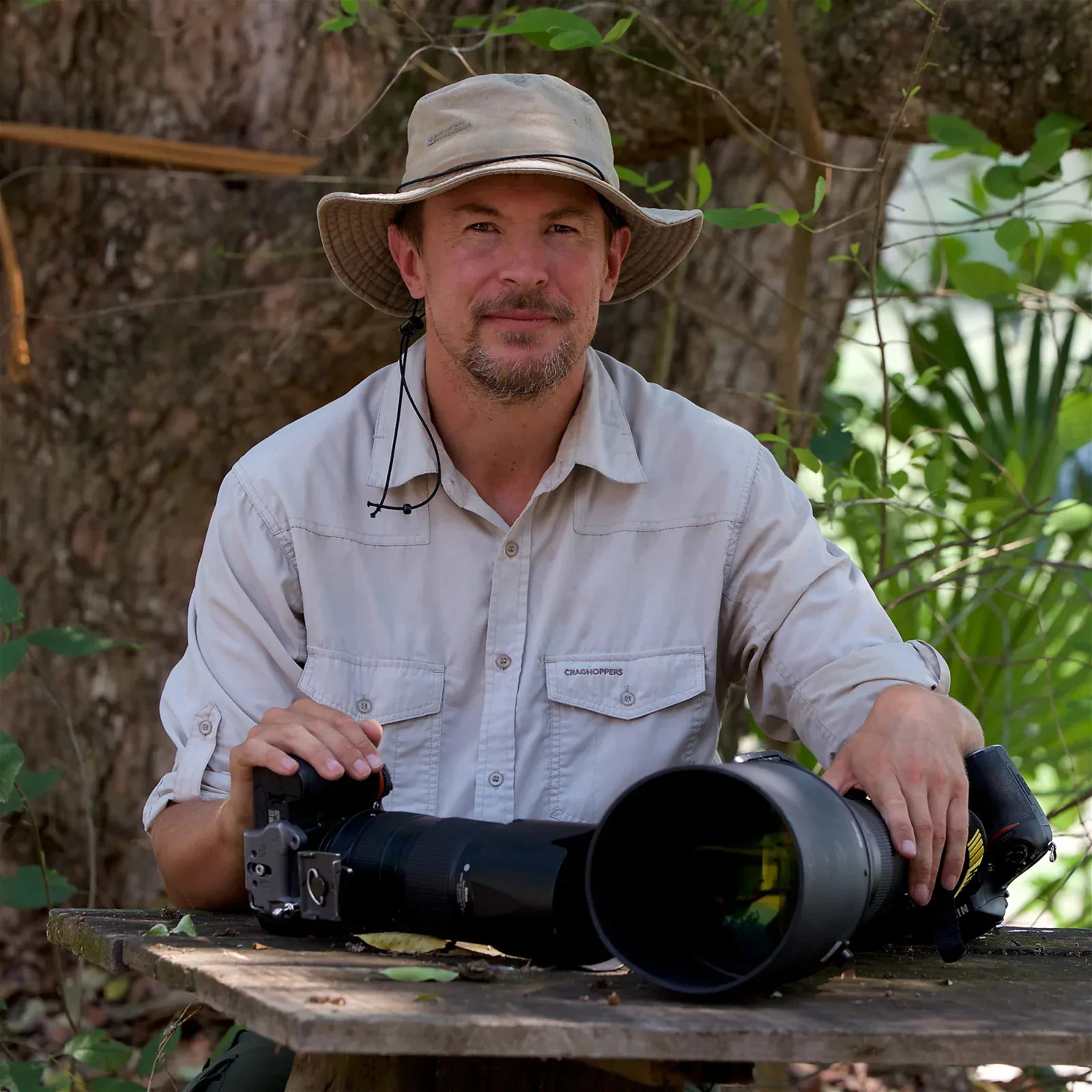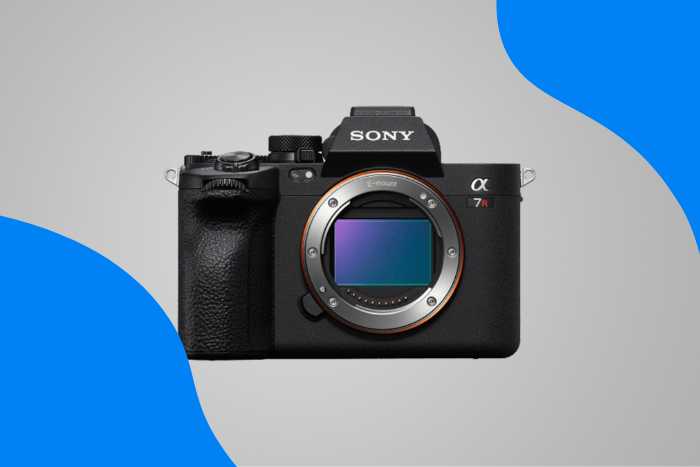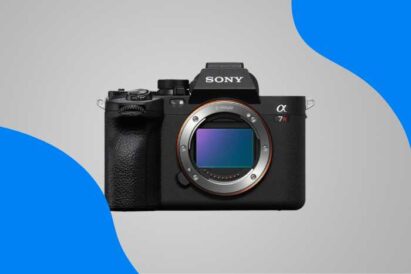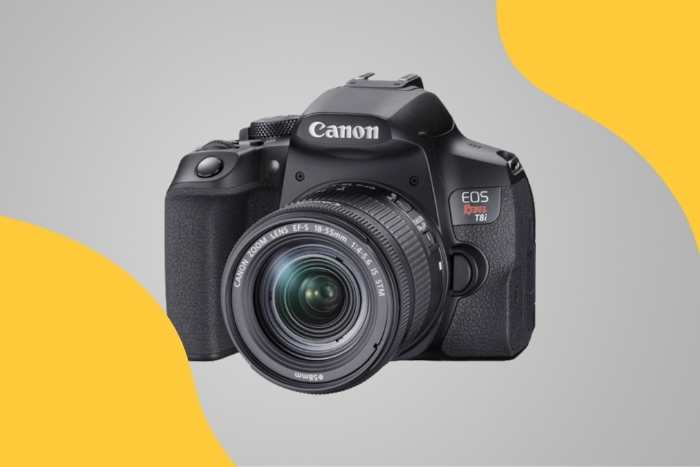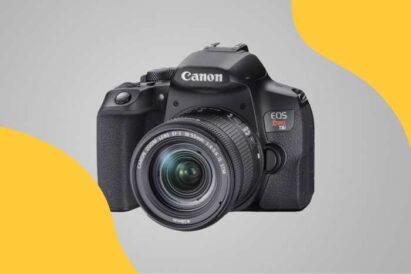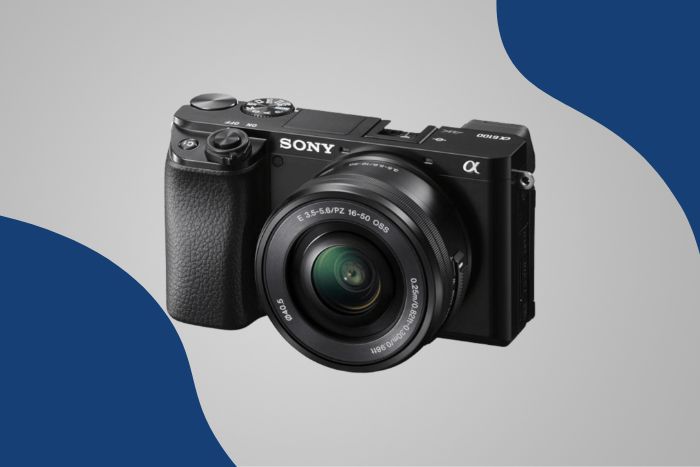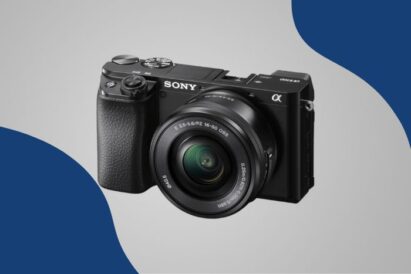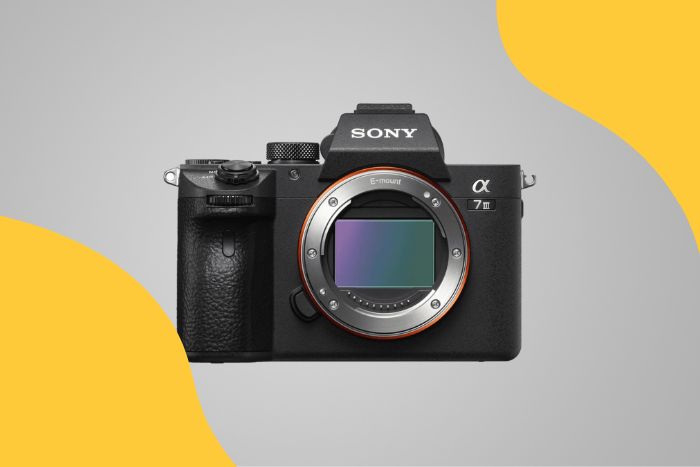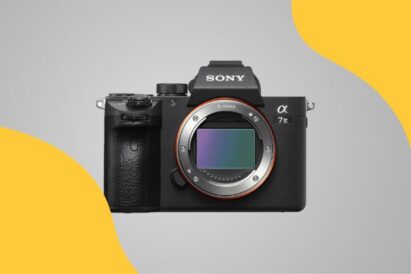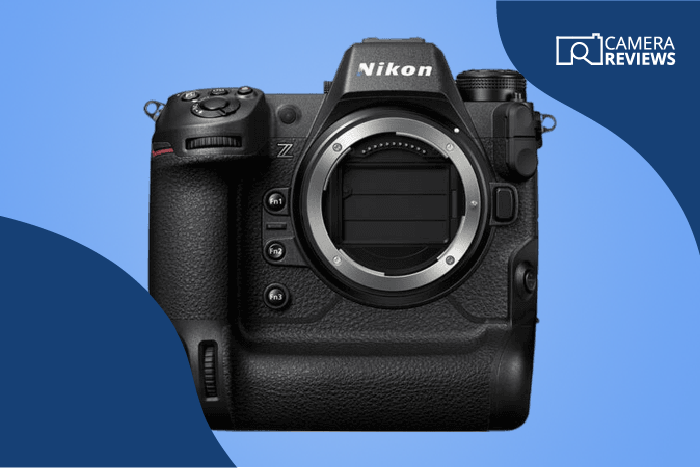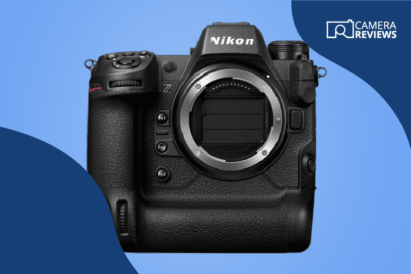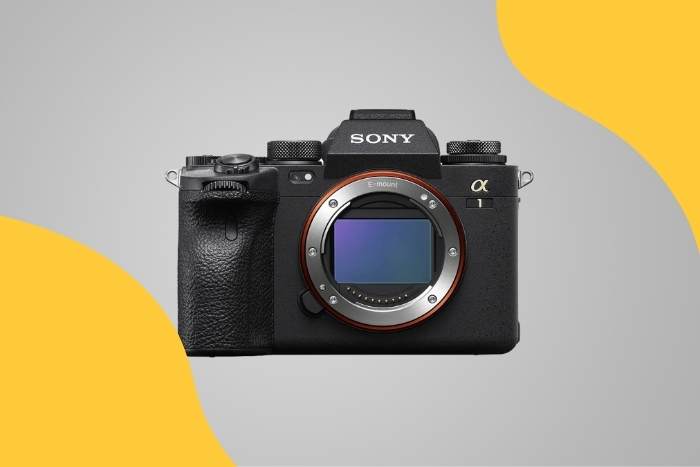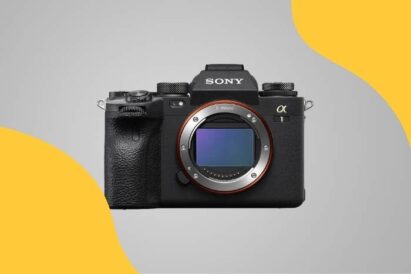Choosing the best camera for bird photography is exciting. But it’s hard work! There are thousands of different models out there and several different formats. These include superzooms, DSLRs, and mirrorless cameras. And they come in both APS-C and full frame.
I sympathize. I was in the same boat last year. I decided to switch from a DSLR camera to a mirrorless for bird photography. I read so much about mirrorless cameras. And I saw so many YouTube videos on their amazing tracking ability. I was aching to buy one!
I eventually chose a pair of Sony a1 full frame cameras. They escape the usual trade-off between sensor size and frame rate. They also offer market-leading eye detection and subject tracking. That makes them the very best cameras for wildlife photography. Since then, I’ve taken several photographic trips to Canada, Antarctica, and Africa. And I haven’t changed my mind!
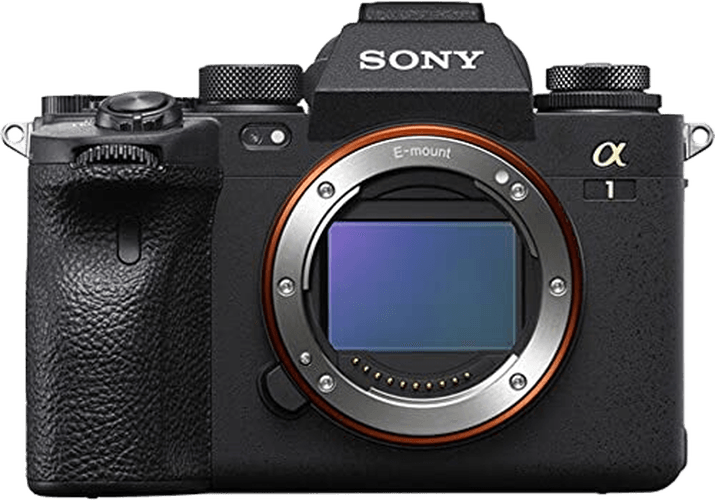
Sony a1
Buying a camera is a bit like buying a car. Not everyone wants or can afford a Ferrari or a Lamborghini. There’s still a place for a Nissan or a Toyota. Maybe you’re happier with a DSLR. Or maybe you want to lighten the load with an APS-C camera or a superzoom. That’s fine. I just hope this article helps you make up your mind.
If you’re new to cameras or bird photography, scroll to the end of the article. We have a general buying guide. And we break down what features to look for when choosing the best camera for bird photography.
What’s the Best Bird Photography Camera to Buy?
Before we discuss each camera in detail, here are my recommended best cameras for bird photography.

- Large sensor captures tons of detail
- High frame rate of 30 fps
- Eye tracking (human, animal, and bird)
- Easy customization
- Silent shooting for quiet situations
- Incredible 8K/30p Ultra HD video
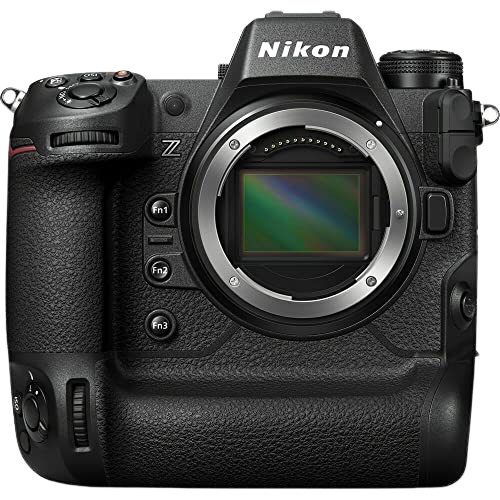
- Ultra-fast image processor
- High, 120 fps compressed frame rate
- No visible rolling shutter
- Excellent battery life
- 8K/60p Ultra HD video
- Unlimited low-resolution recording
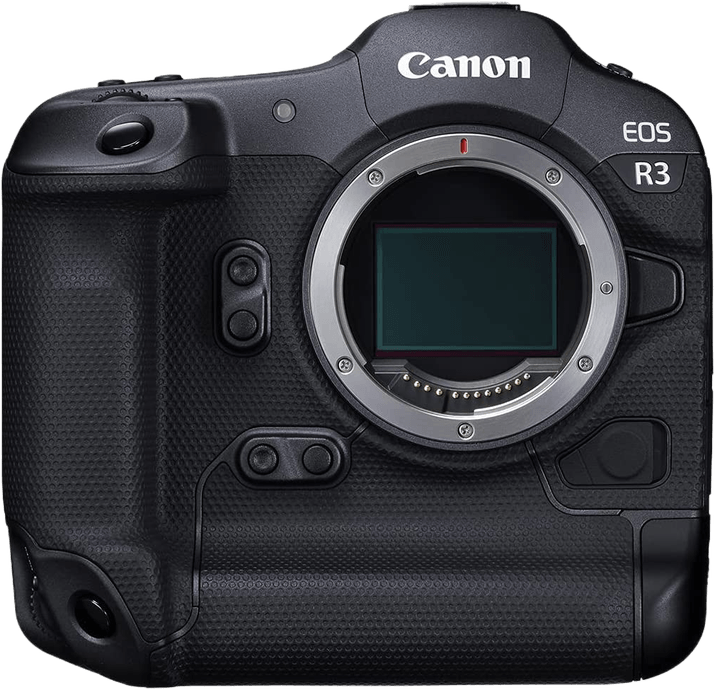
- A high frame rate of 30 fps
- Less noise with BSI stacked sensor
- 8 stops of image stabilization
- 6K / 60p RAW video
- 620-shot battery life
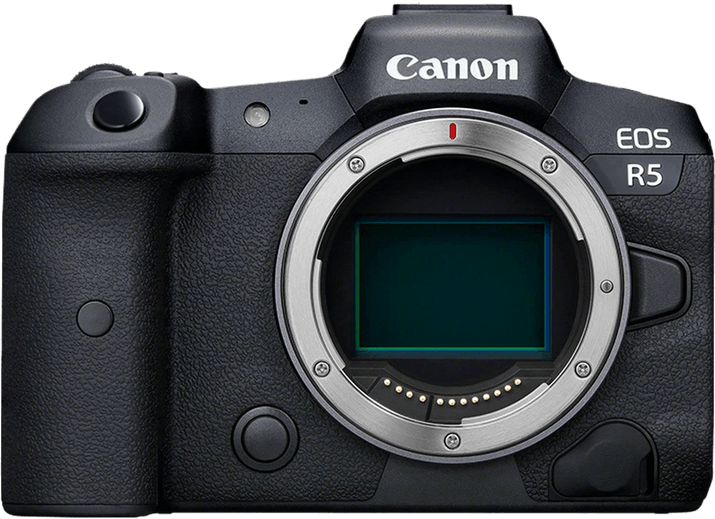
- Large 45 MP sensor
- High frame rate of 20 fps
- In-Body Image Stabilization (IBIS)
- Body, face, eye, and animal tracking
- 8K/30p Ultra HD video
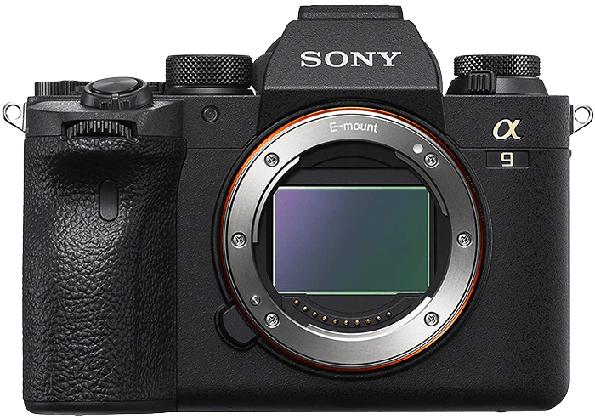
- Impressive 20 fps continuous shooting
- Lightning-fast autofocus
- Improved ergonomics
- Great file transferring speeds
- 5-axis in-body image stabilization to counter camera shake
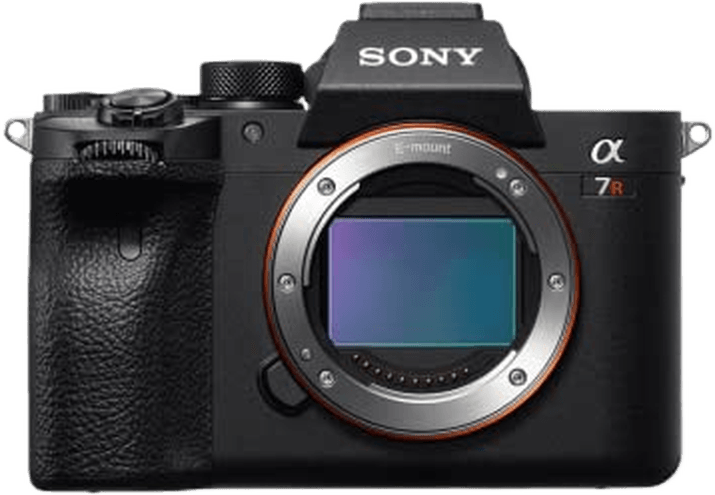
- Super high-resolution sensor
- Stunningly sharp image quality
- Excellent face and eye detection AF
- Large, high-resolution EVF
- Sharp 4K Ultra HD video
- Weather sealing to protect from elements
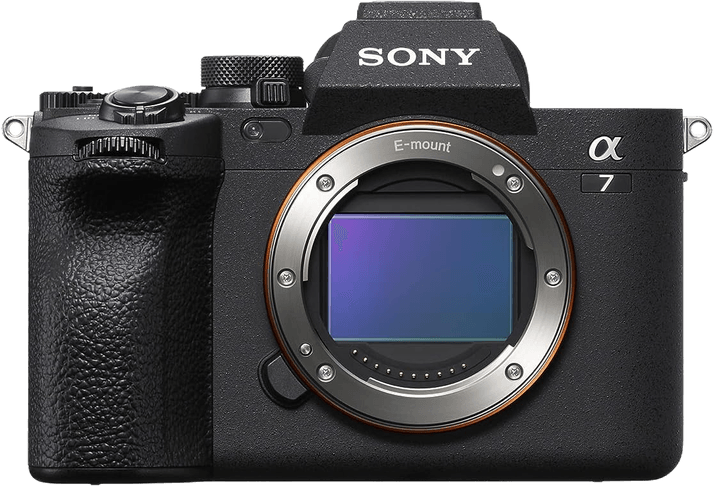
- Excellent image quality
- Super responsive autofocus
- 5.5 stops of image stabilization
- Fully articulating rear screen
- Powerful video capabilities (4K / 60p, 10-bit video) and live streaming
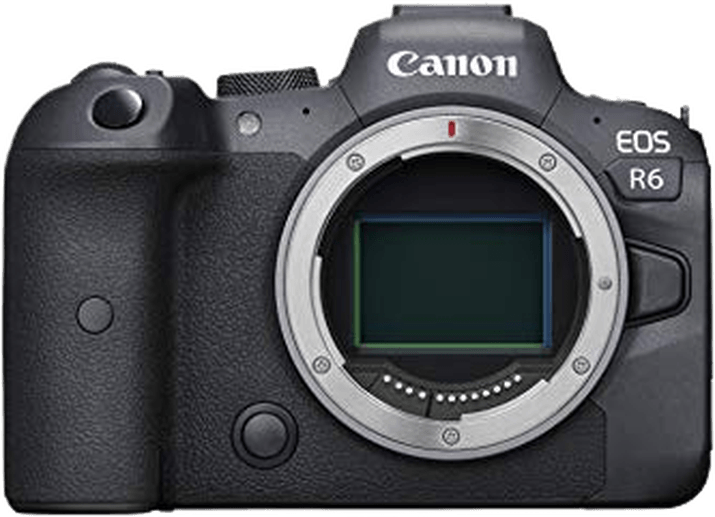
- Relatively affordable
- Excellent in-body image stabilization
- Compact and ergonomic design
- Fantastic expandable ISO range
- Rapid burst speeds
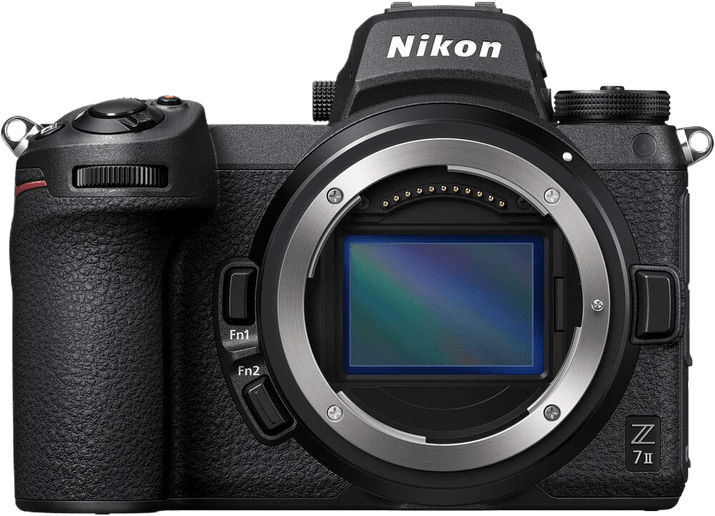
- High-resolution image sensor
- Rapid 1/8000 s shutter speed
- Excellent AF system
- Dual memory card slots
- Great 4K video at 60 fps
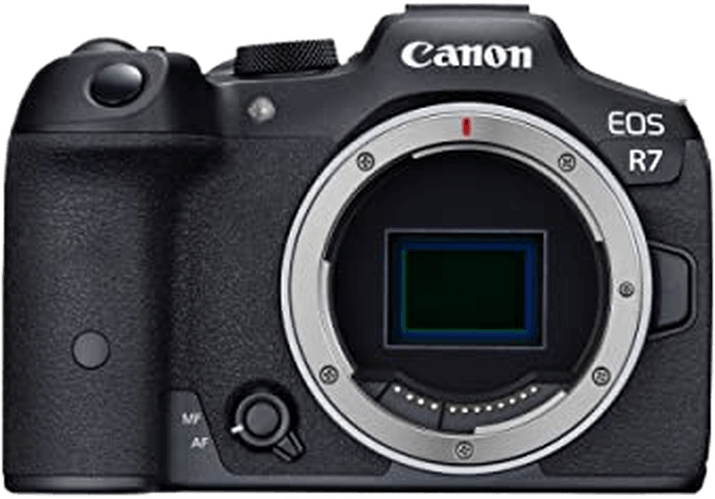
- 30 fps burst mode with electronic shutter
- 5-axis sensor-shift image stabilization
- Fully articulating touch screen
- Unlimited, oversampled 4K video
- Animal eye-detect AF for wildlife and pets
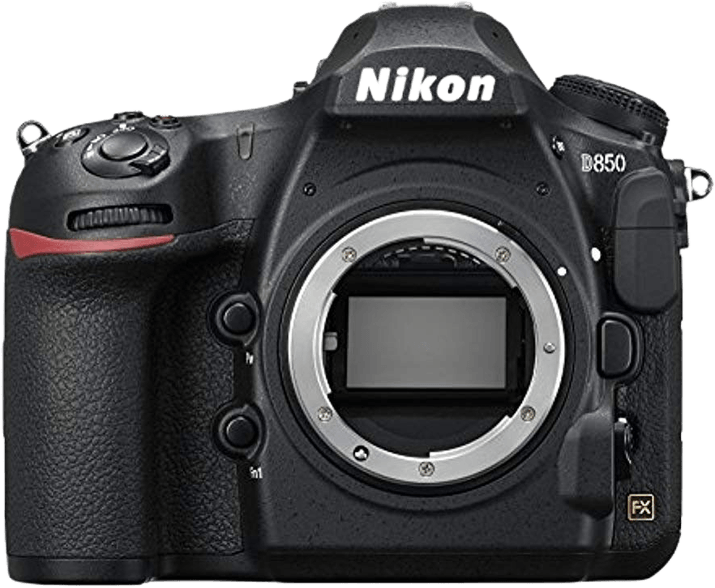
- Fantastic overall image quality
- Excellent 3D continuous AF tracking
- Long, 1,840-shot battery life
- Durable, weather-sealed construction
- Sharp 4K/30p Ultra HD video
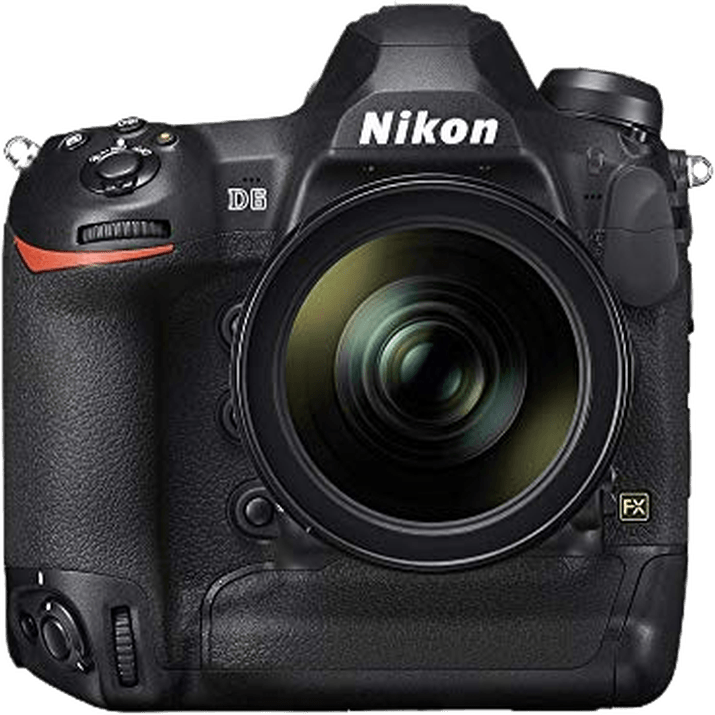
- Advanced 105-point AF system
- Excellent ISO range and low-light performance
- Extra-capacity dual card slots
- Weather-sealed, durable body
- Long-lasting battery life
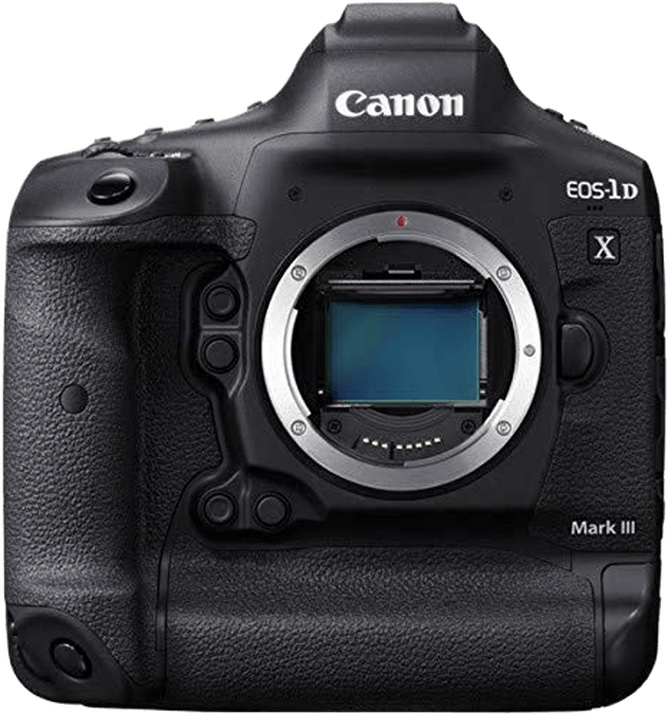
- Excellent low-light capabilities
- Dual Pixel AF and AI detection
- Fantastic buffer for continuous shots
- High frame rate for video recording
- Great battery life
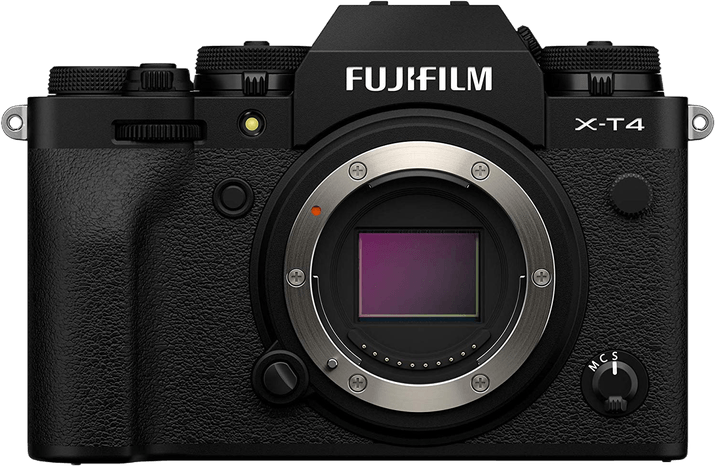
- Decent APS-C BSI-CMOS sensor
- A great frame rate of 15 fps
- 6.5 stops of image stabilization
- 4K video (DCI or Ultra HD) up to 60 fps
- A fully articulating rear touchscreen
- 12 Film Simulation modes
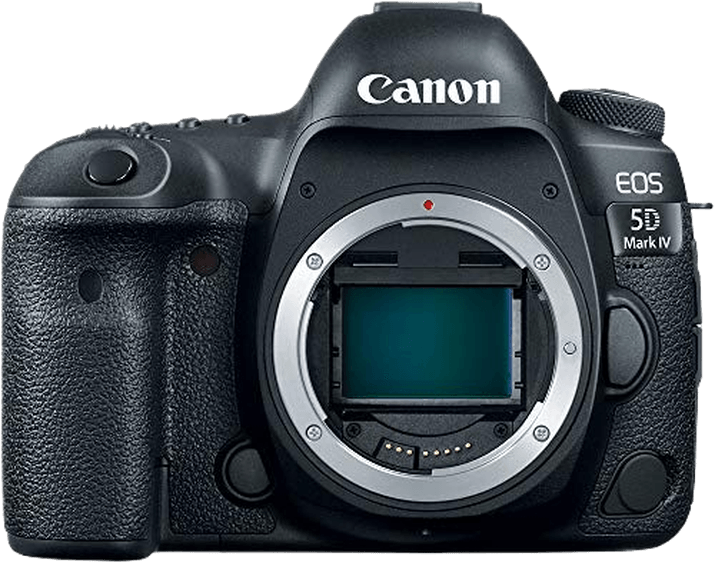
- Quality sensor produces detailed and vibrant images even at high ISOs
- Dual Pixel AF with eye detection
- User-friendly touch-to-focus screen
- 900-shot battery life
- Cinema-quality (DCI) 4K video
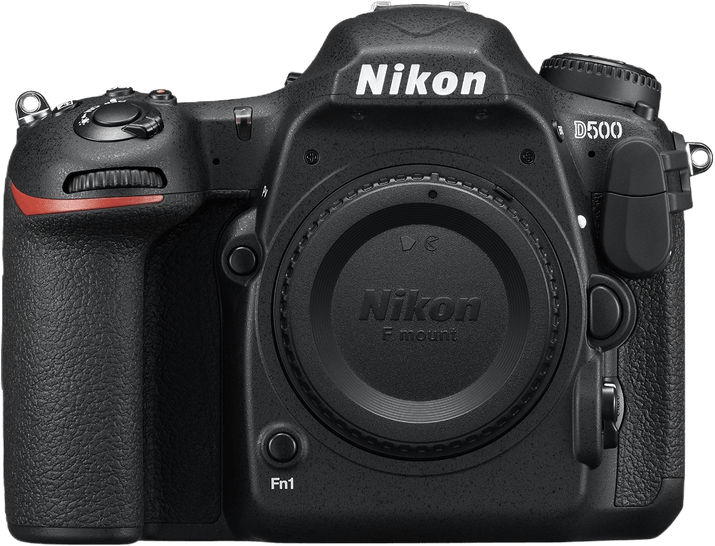
- Excellent low-light performance
- 10 fps RAW burst with 200-image limit
- Weather-sealed body
- Long-lasting battery life
- 4K video with ports for external sound recording
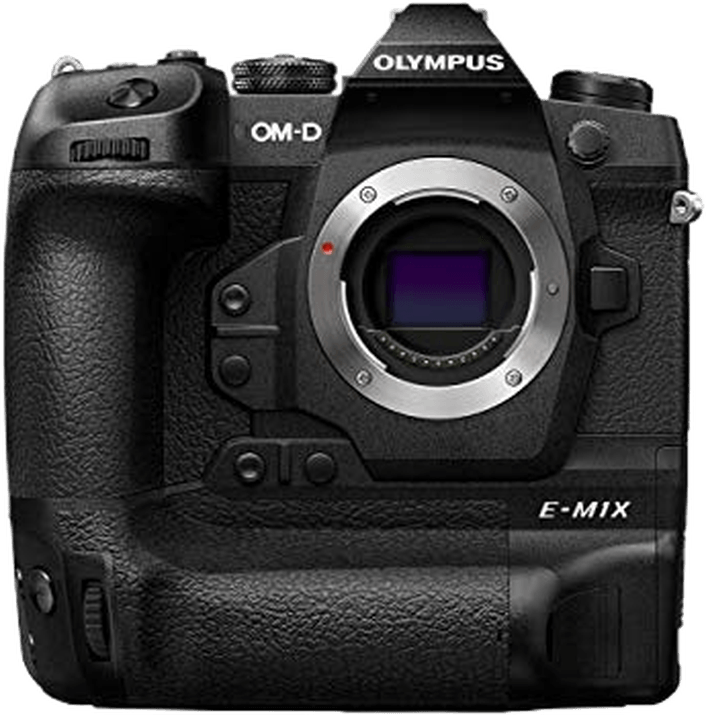
- Good resolution and dynamic range
- Excellent subject tracking
- A great frame rate and deep buffer
- Pleasing JPEG colors
- Up to 7.5 stops of in-body image stablization with supported lenses
- Weather-sealed body
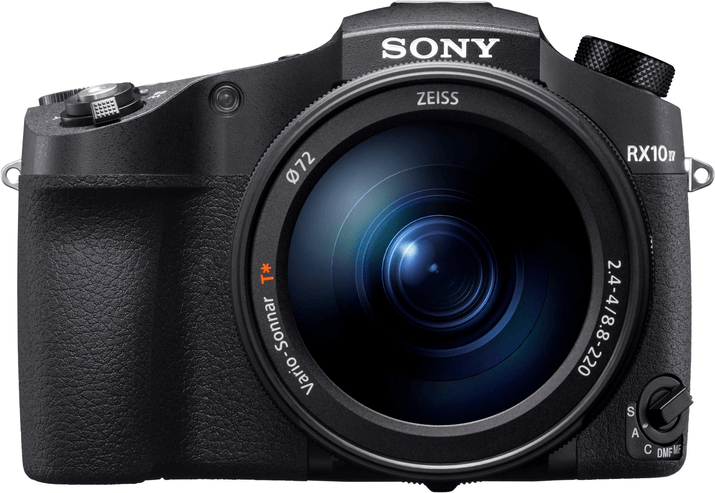
- Impressive 24 fps maximum continuous shooting speed
- Crisp image quality
- Unrivaled lens for a bridge camera
- Incredible 24-600mm zoom range
- 4K video quality
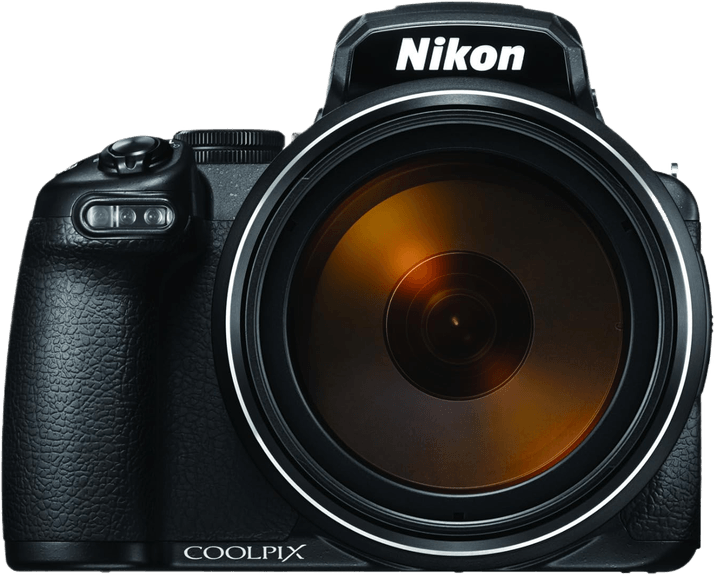
- Unbelievable 125x optical zoom
- In-camera image stabilization
- 1 cm minimum focusing distance
- High-resolution electronic viewfinder
- 4K video shooting
Best Cameras for Bird Photography to Buy (in Detail!)
Let’s dive into the list to find the best camera for bird photography for you! We see how cameras stack up to our top choice and their competitors.
1. Sony a1

| Camera Type |
Camera Type
|
| Megapixels |
Megapixels
50.1 MP |
| Sensor Format |
Sensor Format
|
| Sensor Size |
Sensor Size
24 x 35.9 mm
|
| Frame Rate |
Frame Rate
30 fps |
| Autofocus Points |
Autofocus Points
759 |
- Large sensor captures tons of detail
- High frame rate of 30 fps
- Eye tracking (human, animal, and bird)
- Easy customization
- Silent shooting for quiet situations
- Incredible 8K/30p Ultra HD video
- Expensive
- Highest frame rates only for JPEG, HEIF, and lossy compressed RAW files
- Eye tracking only selected manually
- Small rear LCD screen
- No GPS
I’ve had two Sony a1 full frame cameras for the last 12 months. I’ve used them to take pictures of polar bears in Canada and penguins in Antarctica. And I’ve shot images of leopards, rhinos, and elephants in Africa.
The Sony a1 is one of the market’s best cameras for bird photography. It’s phenomenally expensive. But it’s very exciting to use for several reasons. There are virtually no limits placed on your shooting. The sensor size, frame rate, and buffer size are among the best in the business. Same for its bird-eye autofocus (AF) and subject tracking. So the usual trade-offs don’t apply.
Everything about the a1 is built for speed. The sensor has a high enough readout speed. So rolling shutter effect is not a problem. And the updated BIONZ XR engine offers 8x faster image processing. That leads to a market-leading frame rate. And it means a buffer size that lets you shoot compressed RAW images at 30 fps for more than five seconds!
Like most mirrorless cameras, it’s also great for video. It can shoot unlimited 8K footage with full frame 8.6K oversampling. That means the best-quality, uncropped video you can downsize. Plus, you can record 4K and HD at various frame rates for even more options.
Usability
The Sony a1 is easy to handhold. It has a touch screen LCD. And it features an incredibly bright and clear electronic viewfinder (EVF). The camera body is also weather sealed. So you can take it anywhere outdoors!
It’s also incredibly easy to customize to your heart’s content. You can use the menu system to save three different custom presets. And these are immediately accessible from the main dial. The presets hold just about every possible setting you might need. That includes exposure values, autofocus preferences, and other parameters like white balance.
The rear LCD is quite small. And some might prefer the ergonomics of the Nikon and Canon mirrorless models with integrated grips. However, I haven’t found it to be a problem. One of the advantages of buying an a1 battery grip? You can take it off to save weight if you know you’re shooting handheld for a while.
If money is no object, this is the best of the best for wildlife photography! We also named it our best camera for safari photography!
2. Nikon Z9

| Camera Type |
Camera Type
|
| Megapixels |
Megapixels
46 MP |
| Sensor Format |
Sensor Format
|
| Sensor Size |
Sensor Size
23.9 x 35.9 mm
|
| Frame Rate |
Frame Rate
30 fps |
| Autofocus Points |
Autofocus Points
493 |
- Ultra-fast image processor
- High, 120 fps compressed frame rate
- No visible rolling shutter
- Excellent battery life
- 8K/60p Ultra HD video
- Unlimited low-resolution recording
- Only 11 MP files at the highest frame
- You can only shoot RAW files at 20 fps
- Tracking can fail with erratic movement
- IBIS not as good as Canon R3
- Autofocus isn't as good for video
- The screen doesn't fully articulate
The Nikon Z9 is probably the closest competitor to the Sony a1. I almost bought one last year. I was already using Nikon glass with my D810 and D850 DSLRs. And it would have been much more convenient (and much less expensive!) to get a Z9. However, I had my trip to Canada coming up. And it wouldn’t have been available in time.
The trifecta of bird photography consists of frame rate, sensor size, and autofocus. So how does the Z9 compare with the a1? The Z9’s RAW frame rate is 10 fps slower. The sensor is 4 MP smaller. And the autofocus system doesn’t have Sony’s excellent bird-eye tracking.
However, we’re talking about very slight differences at this level. The Z9 is still one of the most capable cameras for bird photography. And the Z9 has some better features:
- A larger, higher-resolution LCD
- Slightly better color depth and dynamic range
The only real problem is the size of the camera. The integrated grip makes it much taller and wider than the a1. It’s almost twice the weight!
3. Canon EOS R3

| Camera Type |
Camera Type
|
| Megapixels |
Megapixels
24 MP |
| Sensor Format |
Sensor Format
|
| Sensor Size |
Sensor Size
24 x 36 mm
|
| Frame Rate |
Frame Rate
30 fps |
| Autofocus Points |
Autofocus Points
1,053 |
- A high frame rate of 30 fps
- Less noise with BSI stacked sensor
- 8 stops of image stabilization
- 6K / 60p RAW video
- 620-shot battery life
- Relatively expensive
- Low-resolution for some photographers
- No 8K video
- Slowed frame rate with an SD card or low battery
I can never decide between the EOS R3 and the EOS R5. The Canon R3 offers far more features and much better specifications for wildlife photography. But then I remember that it only has a 24 MP sensor!
It’s true—the sensor size of a full frame camera doesn’t matter unless you want to shoot 8K video or print out at large sizes. The R3 sensor is 6000 x 4000 pixels. And it’s enough for a 300 dpi print 20 inches wide.
It’s also true that the lower number of pixels means they are twice as large as those on the R5. That means a better dynamic range and much better performance at high ISOs.
The R3’s new firmware also offers a custom high-speed continuous drive mode. It lets you shoot 2 to 50 shots in JPEG or RAW at up to 195 fps! And the exposure and autofocus settings are fixed. But that’s a blazing speed for wildlife photography.
The Canon R3 also has a unique Eye Control AF mode that lets you move the focus point by just looking at your subject. That’s a valuable time-saver. I hope it makes its way into a few other camera bodies in the next few years.
Combined with Canon’s excellent Dual Pixel AF, the R3 is an excellent camera for bird photography. You can see a comparison with the Sony a1 or the Nikon z9 for context.
4. Canon EOS R5

| Camera Type |
Camera Type
|
| Megapixels |
Megapixels
45 MP |
| Sensor Format |
Sensor Format
|
| Sensor Size |
Sensor Size
23.9 x 35.9 mm
|
| Frame Rate |
Frame Rate
20 fps |
| Autofocus Points |
Autofocus Points
1,053 |
- Large 45 MP sensor
- High frame rate of 20 fps
- In-Body Image Stabilization (IBIS)
- Body, face, eye, and animal tracking
- 8K/30p Ultra HD video
- Expensive
- Complicated autofocus setup
- Noise reduction applied to RAW files
- Hard to customize
- Overheats shooting video
If you prefer a larger sensor that lets you crop in more aggressively, then the Canon EOS R5 beats the R3 hands down. It has almost twice as many pixels! That improves the resolution both for wildlife photography and videography. Plus, the R5 can produce 8K footage at 8192 x 4320 pixels.
The R5 is also much lighter for toting around outdoors. Its color depth is better for bird photography. And it has nearly six times as many focus points. So that gives the R5 a superior autofocus system.
On the other hand, the maximum frame rate and shutter speed are much slower. The low-light ISO, minimum focus sensitivity, dynamic range, and battery life aren’t as good.
You don’t get Eye Control AF, unlimited video recording, or a zero blackout viewfinder. And the LCD has a much lower resolution. As I said, the R3 does look better on paper. But that’s true only if you can put up with the smaller sensor! The choice is yours.
5. Sony a9 II

| Camera Type |
Camera Type
|
| Megapixels |
Megapixels
24.2 MP |
| Sensor Format |
Sensor Format
|
| Sensor Size |
Sensor Size
23.8 x 35.6 mm
|
| Frame Rate |
Frame Rate
20 fps |
| Autofocus Points |
Autofocus Points
693 |
- Impressive 20 fps continuous shooting
- Lightning-fast autofocus
- Improved ergonomics
- Great file transferring speeds
- 5-axis in-body image stabilization to counter camera shake
- No in-camera RAW image processing
- Confusing menus
- Battery performance isn't great
- No S-Log video
- Subpar video quality compared to new full-frame cameras
Like the R5, the Sony a9 II has a rather small sensor. And that has implications for the maximum video resolution. It is only 4K Ultra HD (3840 x 2160 pixels).
The color depth and dynamic range aren’t as good as the a1. And several other features are less impressive than the a1 for wildlife photography.
- You get 66 fewer focus points.
- The frame rate is 10 fps slower.
- The EVF resolution and magnification are much lower.
- Video recording is limited.
There’s also no Pixel Shift High-Res mode, gyroscopic stabilization, or anti-dust shutter. And there’s no HDMI port or CFexpress card slot.
But the a9 II is a lot less expensive than the a1. Plus, the all-important autofocus system is almost as good.
The pixels are also more than double the size, meaning a higher maximum ISO and better high ISO performance. And it has a lighter camera body, NFC connectivity, and longer battery life.
6. Sony a7R IV

| Camera Type |
Camera Type
|
| Megapixels |
Megapixels
61.2 MP |
| Sensor Format |
Sensor Format
|
| Sensor Size |
Sensor Size
23.8 x 35.7 mm
|
| Frame Rate |
Frame Rate
10 fps |
| Autofocus Points |
Autofocus Points
425 |
- Super high-resolution sensor
- Stunningly sharp image quality
- Excellent face and eye detection AF
- Large, high-resolution EVF
- Sharp 4K Ultra HD video
- Weather sealing to protect from elements
- Long write times
- Poor AF at high frame rates
- No pixel-shift motion compensation
- Complicated menus
- Limited, laggy touchscreen functionality
Apart from weight, battery life, and NFC connectivity, the Sony a7R IV loses out to the a1 in every other respect. The main problem is the maximum shutter speed. It is 20 fps slower.
You also don’t get gyroscopic stabilization, an anti-dust shutter, blackout-free shooting, or unlimited video. The minimum focus sensitivity and viewfinder resolution, and magnification are also lower. Finally, the highest video resolution is still only 4K, which is very strange on a 61 MP camera!
But if the image resolution is important to you, then the big advantage of the Sony a7R IV is its 61 MP sensor. Combined with the lack of an anti-aliasing filter, the extra megapixels should allow you to get much greater detail in your images.
The extra megapixels in Pixel Shift High-Res mode help you create monstrously large 241 MP files! You should also get better color depth, dynamic range, and high ISO performance.
7. Sony a7 IV

| Camera Type |
Camera Type
|
| Megapixels |
Megapixels
33 MP |
| Sensor Format |
Sensor Format
|
| Sensor Size |
Sensor Size
23.8 x 35.6 mm
|
| Frame Rate |
Frame Rate
10 fps |
| Autofocus Points |
Autofocus Points
759 |
- Excellent image quality
- Super responsive autofocus
- 5.5 stops of image stabilization
- Fully articulating rear screen
- Powerful video capabilities (4K / 60p, 10-bit video) and live streaming
- More expensive than the Sony a7 III
- 6 fps with 14-bit lossless compressed or uncompressed RAW files
- Significant distortion with moving subjects using a silent shutter
- Occasional issues with rolling shutter
- Requires a fast memory card
Not to be confused with the a7R IV, the Sony a7 IV has a much lower sensor resolution and slightly poorer dynamic range and color depth. It also has shorter battery life, lower viewfinder resolution, and no flash sync port or Pixel Shift High-Res Mode.
The two cameras share many features, but the a7 IV does have a few advantages over the a7R IV. It offers gyroscopic stabilization, unlimited video, and lens breathing correction.
There’s also an HDMI port, an anti-dust shutter, and more selectable focus points. Finally, the much larger pixels mean a higher maximum ISO, improved high ISO performance, and better minimum focus sensitivity.
8. Canon EOS R7

| Camera Type |
Camera Type
|
| Megapixels |
Megapixels
33 MP |
| Sensor Format |
Sensor Format
|
| Sensor Size |
Sensor Size
22.2 x 14.8 mm
|
| Frame Rate |
Frame Rate
15 fps |
| Autofocus Points |
Autofocus Points
651 |
- 30 fps burst mode with electronic shutter
- 5-axis sensor-shift image stabilization
- Fully articulating touch screen
- Unlimited, oversampled 4K video
- Animal eye-detect AF for wildlife and pets
- Fiddly AF joystick and exposure compensation dial
- Easy to change power switch to video by accident
- No built-in flash
- Limited range of native lenses
- Rolling shutter effect shooting video
The Canon EOS R7 is a recent addition to the R series of cameras. It is similar to the R6 listed below. However, it has a better RAW frame rate, a higher-resolution sensor, and unlimited video recording.
It also has a faster maximum shutter speed and longer battery life in a lighter camera body. If you enable Pre-shooting, it even takes pictures a half second before you press the shutter release. That’s a real help for bird photography when you hope to catch the moment a bird takes off or catches a fish.
9. Nikon Z7 Mark II

| Camera Type |
Camera Type
|
| Megapixels |
Megapixels
45.75 MP |
| Sensor Format |
Sensor Format
|
| Sensor Size |
Sensor Size
23.9 x 35.9 mm
|
| Frame Rate |
Frame Rate
10 fps |
| Autofocus Points |
Autofocus Points
439 |
- High-resolution image sensor
- Rapid 1/8000 s shutter speed
- Excellent AF system
- Dual memory card slots
- Great 4K video at 60 fps
- Disappointing battery life of 420 shots
- Tilt screen has limited flexibility
- Limited lens range
- Slow frame rate of 10 fps in continuous shooting speed
The Nikon Z6 Mark II and the Nikon Z7 Mark II are similar to the Canon R3 and R5. There is a trade-off between sensor size and frame rate. The Z6 Mark II has a higher frame rate. But the Z7 Mark II has the larger sensor. Again, this is a matter of choice. But I’ve opted for sensor size. So the Z7 Mark II makes our list.
The Z7 Mark II has a larger sensor. It means nearly twice as many focus points as the Z6 Mark II. And the color depth and dynamic range are also superior.
However, the number of extra pixels means each one is almost half the size. That means poorer performance at higher ISOs, a lower maximum ISO, and a minimum focus sensitivity that’s 1.5 stops worse.
In almost all other respects, the two cameras are identical. That includes eye tracking, time-lapse recording, and wireless and Bluetooth connections. They have a tilting 3.2″ touch screen, headphone and microphone ports, and weather sealing.
They also offer anti-flicker mode, AE bracketing, focus bracketing, and focus stacking. Finally, they take the same memory cards and have smartphone remote control functions.
The Z7 Mark II is a good camera for bird watching.
10. Canon EOS R6

| Camera Type |
Camera Type
|
| Megapixels |
Megapixels
20.1 MP |
| Sensor Format |
Sensor Format
|
| Sensor Size |
Sensor Size
23.9 x 35.9 mm
|
| Frame Rate |
Frame Rate
20 fps |
| Autofocus Points |
Autofocus Points
1,053 |
- Relatively affordable
- Excellent in-body image stabilization
- Compact and ergonomic design
- Fantastic expandable ISO range
- Rapid burst speeds
- Low megapixel count compared to closest competitors
- Interface is challenging to navigate
- EVF drains the battery
- Camera heats up shooting 4K / 60 fps
The Canon EOS R6 is the other full frame mirrorless camera in the R series. Compared to the Canon R3, the lack of an integrated grip makes it much smaller and lighter.
There are also nearly six times as many selectable focus points. However, that doesn’t offer much practical advantage. You don’t want to spend all your time switching between focus points!
In terms of other features, there are quite a few that both cameras have in common. However, the R6 has a smaller sensor and a lower maximum frame rate. It also doesn’t have blackout-free shooting, Eye Control AF, or 6K video.
The LCD is smaller with a lower resolution, the highest shutter speed is much slower, and the battery life is shorter. Color depth, dynamic range, low-light ISO, and minimum focus sensitivity are also worse. Finally, there’s no LCD on the top plate and no illuminated buttons for shooting in the dark.
Despite that, it’s still a great option for bird photographers.
11. Nikon D850

| Camera Type |
Camera Type
|
| Megapixels |
Megapixels
45.7 MP |
| Sensor Format |
Sensor Format
|
| Sensor Size |
Sensor Size
23.9 x 35.9 mm
|
| Frame Rate |
Frame Rate
7 fps |
| Autofocus Points |
Autofocus Points
153 |
- Fantastic overall image quality
- Excellent 3D continuous AF tracking
- Long, 1,840-shot battery life
- Durable, weather-sealed construction
- Sharp 4K/30p Ultra HD video
- No customizable shooting presets
- Slow autofocus in Live View
- Needs an expensive XQD card
- Rolling shutter noticeable in 4K video
- Slow 7 fps or 9 fps with an expensive battery grip
I had a Nikon D850 before I switched to mirrorless last year. It was pretty reliable… until it got splashed by freezing salt water in the Southern Ocean! However, the big letdown is the continuous shooting speed. It’s not great, even with the optional battery grip.
The excellent Multi-CAM 20K autofocus system has 153 points (99 cross-type), of which 55 are selectable. And I particularly liked the 3D Tracking option. However, it suffers from a restricted focus area like all DSLRs.
It’s hard to focus on erratic subjects like birds in flight. It forces you to focus and recompose if your subject’s eye is outside the central area. And focusing in Live View is especially poor. The D850 only has slow, contrast-detection focus points.
Why did I switch from the Nikon D850 to the Sony a1? It might be useful to review the pros and cons. (Spoiler alert—there aren’t many cons!)
On the plus side, the D850 has a slightly larger LCD with much better resolution. The battery life is officially 3x longer (if you believe the CIPA ratings!). And the color depth and dynamic range are marginally better. That’s about it unless you count 8K time-lapse mode, NFC connectivity, focus stacking, focus bracketing, and illuminated buttons.
On the minus side, there are a ton of features that favor the a1 rather than the D850. You can compare their specs and see for yourself. The D850 doesn’t have Animal Eye AF Tracking or Eye Tracking Focus. The a1 also has better viewfinder magnification and High-Res mode to capture better bird details.
That’s the difference between what is Nikon’s best DSLR for bird photography and Sony’s flagship mirrorless model. The D850 is an excellent camera for a bird photographer. And I’d still have one now if the mirrorless revolution had never happened.
12. Nikon D6

| Camera Type |
Camera Type
|
| Megapixels |
Megapixels
20.8 MP |
| Sensor Format |
Sensor Format
|
| Sensor Size |
Sensor Size
35.9 x 23.9 mm
|
| Frame Rate |
Frame Rate
14 fps |
| Autofocus Points |
Autofocus Points
105 |
- Advanced 105-point AF system
- Excellent ISO range and low-light performance
- Extra-capacity dual card slots
- Weather-sealed, durable body
- Long-lasting battery life
- Very expensive camera
- No sensor-shift image stabilization
- Heavy camera body
- Fixed rear viewing screen
- Short 4K video recording time limit
The Nikon D6 is the other heavyweight in Nikon’s corner. And I mean literally due to the integrated grip! Again, it shows the same trade-off between sensor size and frame rate. (Like the Canon R3 vs R6 and the Nikon Z6 Mark II vs Z7 Mark II.) This time, the D850 has twice the sensor resolution. But the D6 has twice the frame rate!
The D6 also has a much higher maximum ISO, much longer battery life, and double the shutter life expectancy. However, in other respects, the two cameras are almost impossible to separate.
There’s no in-camera stabilization. But both have two memory card slots, wireless and Bluetooth connections, and the same size touch screen. They also offer RAW support, face detection, illuminated buttons, and headphone and microphone ports. Finally, they offer AE bracketing, focus bracketing, smartphone remote control, and anti-flicker mode.
If you like DSLRs more than mirrorless models, then the D6 and D850 are valid options for capturing birds. But it’s getting harder and harder to justify!
13. Canon EOS 1DX Mark III

| Camera Type |
Camera Type
|
| Megapixels |
Megapixels
20.1 MP |
| Sensor Format |
Sensor Format
|
| Sensor Size |
Sensor Size
24 x 36 mm
|
| Frame Rate |
Frame Rate
20 fps |
| Autofocus Points |
Autofocus Points
191 |
- Excellent low-light capabilities
- Dual Pixel AF and AI detection
- Fantastic buffer for continuous shots
- High frame rate for video recording
- Great battery life
- Relatively expensive
- Lower megapixel count than closest competitors
- No in-body image stabilization
- A heavy camera body
The Canon EOS 1DX Mark III is the flagship Canon DSLR. Its specifications are similar to those of the Nikon D6. It offers a similar resolution but a much higher frame rate.
The D6 does better in battery life, LCD resolution, time-lapse recording, focus bracketing, and AE bracketing range. The D6 is also lighter and comes with Bluetooth.
However, the EOS-1DX Mark III has better autofocus. The Dual Pixel AF system has more focus points, cross-type sensors, and available focus points at f/8 (when using a teleconverter or extender). The new Digic X processor also helps. It boosts the autofocus processing speed by 380x!
Other benefits include higher-resolution video and longer shutter life expectancy. It’s a decent camera for birding.
14. Fujifilm X-T4

| Camera Type |
Camera Type
|
| Megapixels |
Megapixels
26 MP |
| Sensor Format |
Sensor Format
|
| Sensor Size |
Sensor Size
23.5 x 15.6 mm
|
| Frame Rate |
Frame Rate
20 fps |
| Autofocus Points |
Autofocus Points
425 |
- Decent APS-C BSI-CMOS sensor
- A great frame rate of 15 fps
- 6.5 stops of image stabilization
- 4K video (DCI or Ultra HD) up to 60 fps
- A fully articulating rear touchscreen
- 12 Film Simulation modes
- Expensive for an APS-C camera
- Autofocus speed and accuracy depends on the lens and the subject
- Unreliable face and eye detection
- No external battery charger provided
- Limited video recording time
- No subject tracking in video mode
Do you like mirrorless cameras but don’t fancy carrying a heavy camera bag? The APS-C Fujifilm X-T4 might suit you. It’s not in the same ballpark as the top mirrorless models offered by Sony, Canon, and Nikon. But it packs a lot of punch despite its size. And the native XF lenses are much smaller and lighter.
It has a smaller sensor. But the X-T4 shares many features with most full frame mirrorless models. That includes eye tracking and face detection, anti-flicker mode, and sensor-shift image stabilization.
It also offers smartphone remote control, time-lapse recording, touch screen control, and weather sealing. You get wireless and Bluetooth connections. And there are headphone, microphone, and flash-sync ports.
The RAW frame rate matches the Canon R5 and Nikon Z9. It can capture 4K 60p video footage. And the rear touch screen is fully articulated for difficult angle shots. In addition, it has retro styling that might appeal to some buyers. It offers 12 Film Simulation modes. That includes cinematic options like Eterna Bleach Bypass. It creates low saturation and high contrast.
When it comes to bird photography, the main downside is the autofocus. It’s an improvement on the X-T3’s system. It has “stickier” subject tracking for birds in flight (especially in low light). However, face and eye detection give false positives. Tracking is also poor with some colors or accelerating and decelerating subjects.
15. Canon EOS 5D Mark IV

| Camera Type |
Camera Type
|
| Megapixels |
Megapixels
30.4 MP |
| Sensor Format |
Sensor Format
|
| Sensor Size |
Sensor Size
24 x 36 mm
|
| Frame Rate |
Frame Rate
7 fps |
| Autofocus Points |
Autofocus Points
61 |
- Quality sensor produces detailed and vibrant images even at high ISOs
- Dual Pixel AF with eye detection
- User-friendly touch-to-focus screen
- 900-shot battery life
- Cinema-quality (DCI) 4K video
- Unreliable, imprecise subject tracking
- Limited dynamic range
- No in-body stabilization
- No bluetooth
- 64x crop factor with 4K video
If you can’t afford the EOS-1DX Mark III, the Canon EOS 5D Mark IV is another full frame DSLR in a similar mold. It’s four years older than the Mark III but has a larger sensor. It also offers time-lapse recording, NFC connectivity, and 4K picture mode. The lack of an integrated grip also makes it much smaller and lighter.
The 1DX Mark III has a higher maximum ISO, more focus points (including cross-type and at f/8), and a faster frame rate. It also offers longer battery life, a higher-resolution screen and video, illuminated buttons, and CFexpress support.
Both cameras have Wi-Fi, touch screen operation, weather sealing, face detection focus, and RAW support. They also have AE bracketing, anti-flicker modes, and electronic levels.
Both have two memory card slots and smartphone remotes. And each has headphone, microphone, and flash sync ports. They’re solid options as bird-watching cameras.
16. Nikon D500

| Camera Type |
Camera Type
|
| Megapixels |
Megapixels
20.9 MP |
| Sensor Format |
Sensor Format
|
| Sensor Size |
Sensor Size
15.7 x 23.5 mm
|
| Frame Rate |
Frame Rate
10 fps |
| Autofocus Points |
Autofocus Points
153 |
- Excellent low-light performance
- 10 fps RAW burst with 200-image limit
- Weather-sealed body
- Long-lasting battery life
- 4K video with ports for external sound recording
- Low resolution for an APS-C Sensor
- No advanced bird or animal AF
- Slow AF in Live View
- Heavy DSLR body
- 4K video is cropped
The Nikon D500 is a DX-format camera. That means it’s a kind of APS-C DSLR camera with a 1.5x crop factor. The sensor is smaller than a full frame sensor and has a lower resolution. However, the expanded ISO range and continuous shooting speed are higher than on the D850!
If you’re looking for a crop sensor model, it might be helpful to compare the D500 to the Fujifilm X-T4. They’re both APS-C cameras. But the D500 is a DSLR, and the X-T4 is mirrorless.
The X-T4 wins in every major area, including image quality, features, video, size, and value for money. It has a higher picture and video resolution, IBIS, a fully articulated LCD, and a larger viewfinder. It also comes with more focus points, a higher burst rate, a lighter body, and a longer shutter life expectancy. Finally, it boasts focus bracketing, webcam functionality, and eye tracking.
On the other hand, the D500 offers a larger, higher-resolution LCD, NFC connection, and illuminated buttons. It also has more than twice the battery life.
They also share several other features. They have wireless and Bluetooth connections, a touch screen, RAW support, face detection, and microphone, headphone, and flash sync ports. They also have weather sealing, time-lapse recording, and AE bracketing. Finally, they come with two memory card slots, a smartphone remote control, and an anti-flicker mode.
All in all, the D500 offers a decent bundle of features for beginner bird photographers. But only if you’re wedded to Nikon and can’t stand the idea of a mirrorless camera!
17. Olympus OM-D E-M1X

| Camera Type |
Camera Type
|
| Megapixels |
Megapixels
20 MP |
| Sensor Format |
Sensor Format
|
| Sensor Size |
Sensor Size
13 x 17.4 mm
|
| Frame Rate |
Frame Rate
60 fps |
| Autofocus Points |
Autofocus Points
121 |
- Good resolution and dynamic range
- Excellent subject tracking
- A great frame rate and deep buffer
- Pleasing JPEG colors
- Up to 7.5 stops of in-body image stablization with supported lenses
- Weather-sealed body
- Expensive
- Sensor doesn't match up to many close competitors
- Electronic shutter might lead to rolling shutter effects and banding
- Large, heavy, hard to handle body
- Motion artifacts with Cinema 4K at 24p
The Olympus OM-D E-M1X is a Micro Four Thirds (MFT) camera. That means it has an even smaller sensor than APS-C cameras, such as the Fujifilm X-T4 or the Nikon D500. However, the integrated grip makes the body quite large and heavy.
It provides a great feature set. It includes 4K video and an exceptional frame rate with the electronic shutter. You also get built-in wireless, GPS, and Bluetooth connectivity. And it’s a weather-sealed camera body. The LCD is “selfie-friendly. It makes it handy for bird watchers who vlog.
One important note. The Olympus Pro cameras, such as the EM1X, are the only mirrorless models with all cross-type sensors. That gives them an advantage in autofocus speed and accuracy. It’s ideal for capturing birds.
You might not like the sensor size. But it’s good enough for wildlife and bird photographers like Andy Rouse!
18. Sony Cyber-Shot RX10 IV

| Camera Type |
Camera Type
|
| Megapixels |
Megapixels
20 MP |
| Sensor Format |
Sensor Format
|
| Sensor Size |
Sensor Size
13.2 x 8.8 mm
|
| Frame Rate |
Frame Rate
24 fps |
| Autofocus Points |
Autofocus Points
315 |
- Impressive 24 fps maximum continuous shooting speed
- Crisp image quality
- Unrivaled lens for a bridge camera
- Incredible 24-600mm zoom range
- 4K video quality
- Expensive price tag
- Not an interchangeable lens camera
- No attached ND filter
- Slow autofocus in video mode
- Heavy for a compact camera
The Sony Cyber-Shot RX10 IV is a bridge camera (or superzoom). It offers a one-stop shop for bird photographers. You wouldn’t expect very high image quality with this kind of camera. However, the RX10 IV has fast and accurate subject tracking and a sharp Zeiss fixed lens. It’s the same as a 24-600 mm lens on a full frame camera.
The stabilization is also excellent. And the fastest apertures are f/2.4 at 24 mm) and f/4 at 100 mm. This makes it easy to shoot handheld in low light. The highest frame rate is fast enough for bird photography (although you can’t shoot in RAW). And the electronic shutter is silent.
You can also use the RX10 IV for macro work. And it will focus at wide focal lengths of 1.2″ (3 cm). You can even use the built-in flash for daylight fill-in flash as the sync speed is 1/2000 s!
Being a Sony camera, the electronic viewfinder is sharp and clear with no lag. However, the touch screen only lets you select the focus point. It doesn’t work for menus, playback, or entering text.
There’s only one card slot, one MR preset, and no GPS (although you can get that from your smartphone). However, the most irritating problem is that you can’t zoom in (or out) while shooting in continuous mode.
Apart from that, this is a great package for beginner bird photographers. It does a lot of things, surprisingly, very well!
19. Nikon Coolpix P1000

| Camera Type |
Camera Type
|
| Megapixels |
Megapixels
16 MP |
| Sensor Format |
Sensor Format
|
| Sensor Size |
Sensor Size
6.17 x 4.55 mm
|
| Frame Rate |
Frame Rate
7 fps |
| Autofocus Points |
Autofocus Points
1 |
- Unbelievable 125x optical zoom
- In-camera image stabilization
- 1 cm minimum focusing distance
- High-resolution electronic viewfinder
- 4K video shooting
- Image quality drops off at longer focal lengths
- Frame rate buffer fills quickly
- No touchscreen
- No weather sealing
- Bulky and heavy body
I started with a bridge camera. And one of the reasons I did was because it offered a great zoom range. If that’s important to you, then the Nikon Coolpix P1000 is worth a look. The zoom range is a massive 83x. The equivalent focal length on a full frame model would be 24-3000 mm!
There are challenges when shooting at maximum zoom. This includes diffraction effects and heat haze. The P1000 comes with “Dual Detect.” It offers five stops of optical image stabilization. However, you still won’t get very sharp images, given the size and resolution of the sensor. The other problem is that the maximum aperture drops from f/2.8 at 24 mm to f/8 at 3000 mm. So objects in the background might become distracting.
The buffer is also very small, the battery life is short, and the maximum ISO is quite low. There’s no touch screen or weather sealing, and the autofocus system struggles at longer focal lengths.
The P1000 does have quite a long list of features. It offers RAW support, 4K video with no crop, a 0.5″ (1 cm). It has a minimum focus distance of 24 mm for macro work. And a Snapback Zoom button helps you focus on a “lost” subject.
It has a 3.2″ fully articulating screen and a large, high-resolution EVF. Finally, the Snapbridge software makes it easy to geotag and share photos over Bluetooth. It’s yet another camera for beginner bird photographers.
Our Verdict
What does the best camera for bird photography provide? It has great image quality, a fast frame rate, a large buffer, and a high maximum shutter speed. It also offers eye detection and subject tracking. And it’s all in a compact, lightweight, weather-sealed body.
This wasn’t available to bird photographers at any price in the past! However, the mirrorless revolution has come. It has brought us cameras such as the Sony a1, Nikon Z9, Canon R3, and Canon R5. So it is possible to have it all!

Sony a1
Sure, the Sony a1 is very expensive. However, it offers pretty much everything you need for bird photography. The equivalent Canon and Nikon cameras follow close behind.
If you can’t afford something like that, there are plenty of cheaper DSLRs. Alternatively, getting a crop sensor camera or a superzoom can save money and weight.
A Guide to Buying the Best Camera for Bird Photography
Let’s look closely at the key criteria for selecting the right bird photography cameras. Here you can decide what features you want most in
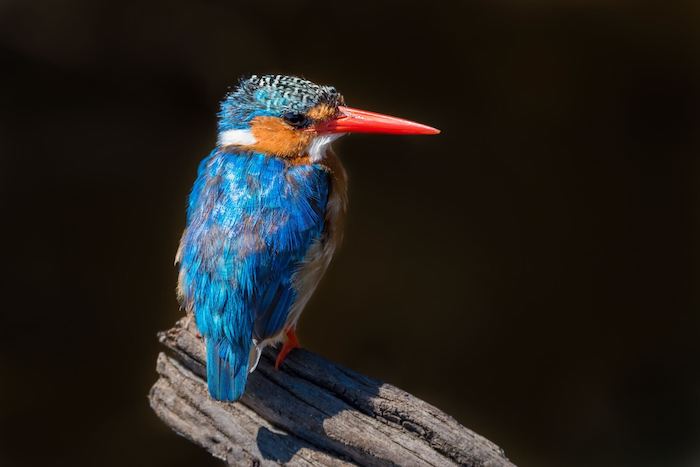
Image Quality
Having a sensor with lots of megapixels is a double-edged sword. On the one hand, you might have to sacrifice a high frame rate. And if you don’t have good camera technique, you might even have softer pictures! On the other hand, you should be able to capture much more detail and crop in if you have. And you won’t lose too much image quality.
That might seem to rule out getting a crop sensor or bridge cameras. But the advantage you get is the extra reach. Instead of cropping in editing software like Lightroom, the crop happens in the viewfinder. This can make it easier to frame your bird and wildlife photography.
Frame Rate
Beyond 10 fps, you might ask what the benefit of a higher frame rate is. From personal experience, birds in flight can move very fast and erratically. This is especially true for smaller birds. You often get 30 completely different shots at 30 fps. Some images have wings raised. Some have them lowered, and some have wings level.
You can’t predict where wings will be at the exact moment when you press the shutter. That means a higher frame rate gives you more chances to get a great shot photographing birds.
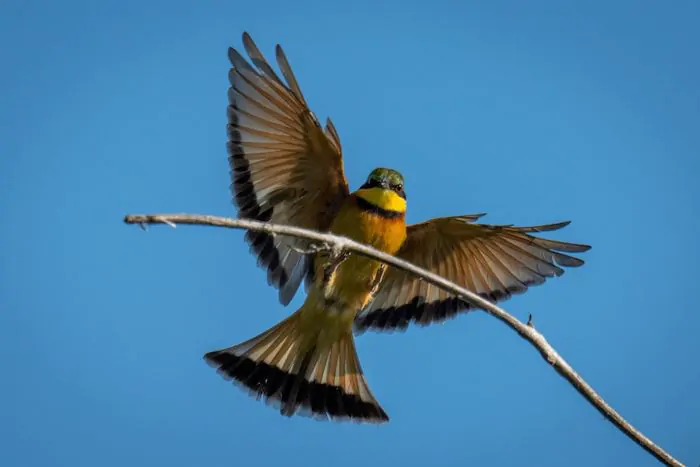
Buffer
The buffer size always limits the frame rate. Say you’re shooting at 30 fps. Then a small buffer means even the best camera will soon slow down or even stop shooting. If birds in flight last longer than a second or two, you’re out of luck!
Choosing the right camera helps. And so will buying the fastest memory card you can afford. There’s a limit to the read and write speeds of SD cards. You are much better off with a CFexpress or XQD card. The faster the camera can write to the card, the faster it can clear the buffer.
Shutter Speed
You need a high shutter speed to freeze birds in flight. With larger birds such as herons, you might be able to get away with 1/1600 s. But smaller birds might demand 1/3200 s or even faster. Top-end mirrorless cameras can shoot at 1/8000 s or even 1/64000 s with the electronic shutter. So you have plenty of room for maneuver.
Sharpness trumps everything else, so don’t worry about pushing your ISO up too far. It’s much easier to eliminate noise in post-production than to make a blurred image sharp!
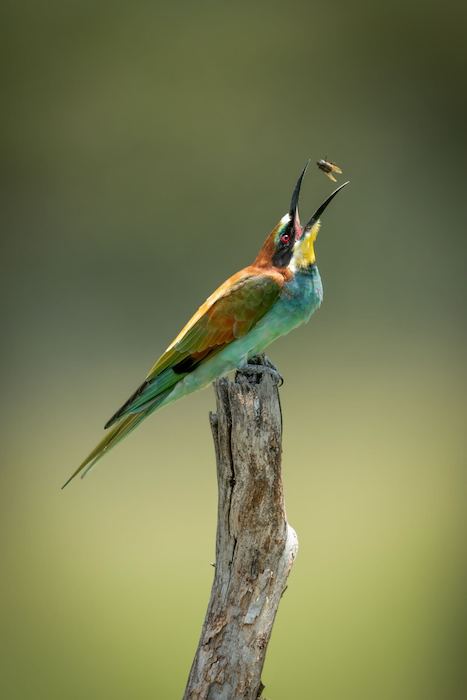
Autofocus
This is one of the big advantages of a mirrorless camera for bird photography. Most have selectable focus points across more than 90% of the frame. A DSLR focuses more on the central area. So you never have to focus and recompose with mirrorless models when photographing birds.
The best cameras also offer face or eye detection and subject tracking. These are incredibly useful for bird photography. It is very helpful when trying to photograph a bird in flight.
The speed and accuracy of the mirrorless AF systems are matched by their sheer usability. You have a choice of focus areas. And the camera will choose the subject that is closest and nearest to the center. If that’s not enough, eye detection overrides that if the eye is outside the selected area. Genius!
Size and Weight
A mirrorless camera is generally smaller than a DSLR. That’s because it doesn’t have to include a mirror or pentaprism in the viewfinder. Some of the latest native telephoto lenses from Sony and Canon are also incredibly light. That means handholding at 600 mm is suddenly a lot easier to do!
Mirrorless cameras have had a problem with battery life because of the need to power the EVF. It meant you needed a heavy battery grip to allow you to keep shooting. However, I’ve found my Sony a1s can shoot for far longer than the official CIPA battery life… as long as you use continuous mode. That means I can leave my battery grips at home to reduce weight.
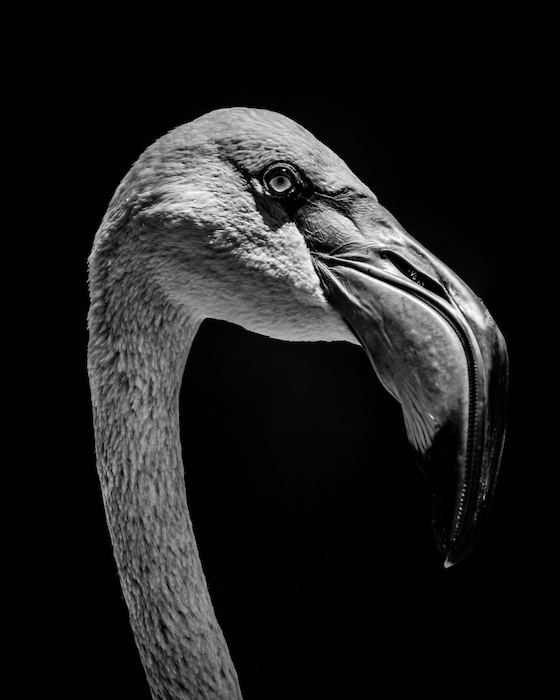
Durability
Most top-end cameras and lenses are weather sealed these days. But it’s worth checking before you buy. Bird photography sometimes means standing outside for long periods in dust, rain, hail, or snow. You don’t want to stop shooting to keep your camera dry!

